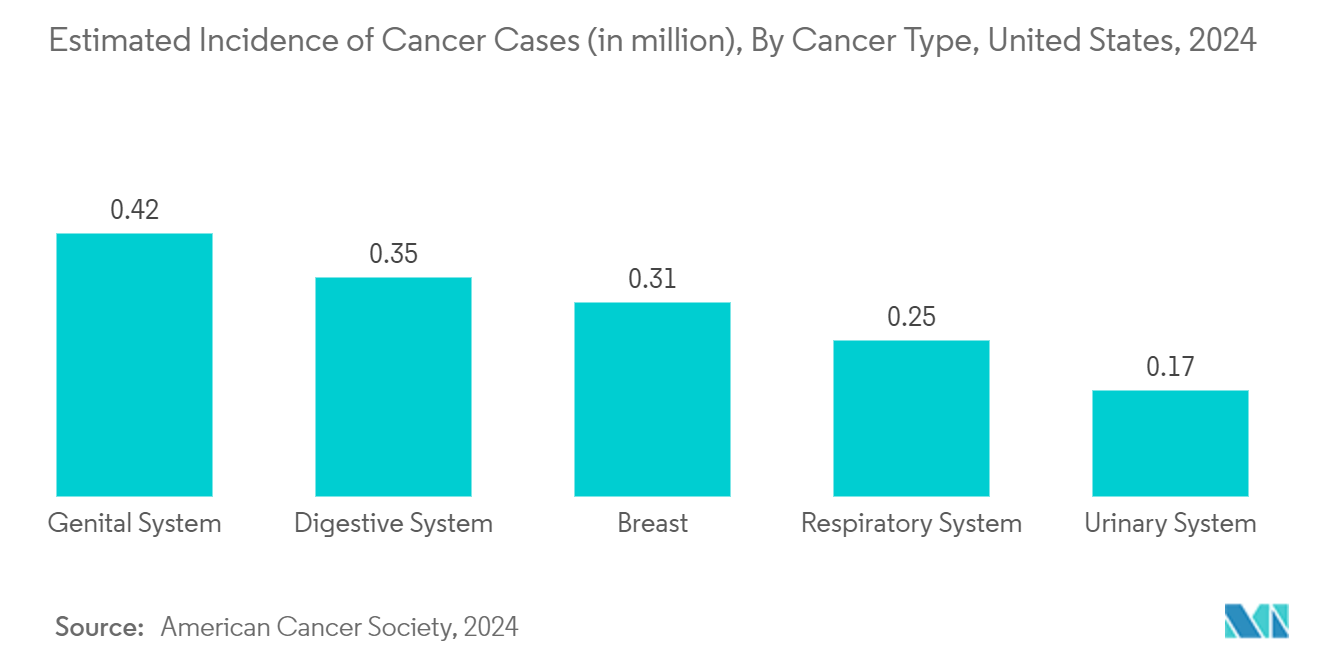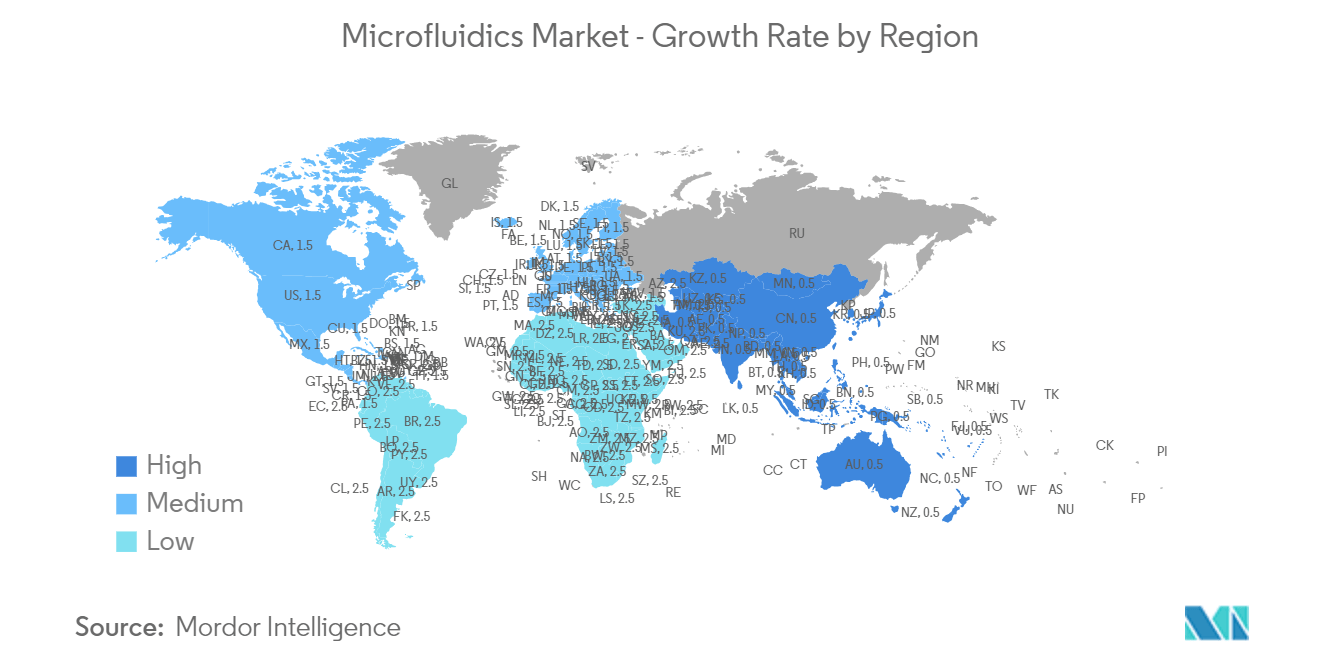Market Trends of Microfluidics Industry
The Point-of-Care Diagnostics Segment is Expected to Witness Considerable Growth During the Forecast Period
The point-of-care diagnostics segment is expected to witness significant growth in the microfluidics market during the forecast period due to the rising prevalence of chronic diseases, increasing demand for point-of-care testing devices, and technological advancements. For instance, according to the data updated by Cancer Australia in 2023, an estimated 162,163 cancer cases were diagnosed in Australia in 2022. Thus, the high prevalence of cancer cases is anticipated to increase the demand for point-of-care diagnostics, propelling the market's growth.
Ongoing research and technological advancements are continually improving the capabilities of microfluidics technology, and these innovations are expanding the range of applications and increasing the accuracy and sensitivity of point-of-care diagnostics, which are the key market drivers for adopting microfluidic technology. For instance, according to the research published by the Biosensors Journal in March 2023, microfluidics technology is being extensively researched owing to its benefits, such as quick operation, less reagent requirement (microliter or even nanoliter), and a significantly high integration capability, such as sample preparation, detection, and analysis into a single platform.
The major advantages associated with the devices are rapid and precise response, cost-effectiveness, and portability. Research is being done in point-of-care diagnostics to develop a chip-based device that can examine multiple analytes in complex samples. Hence, the integration of microfluidics is believed to contribute to the improvisation of point-of-care diagnostics.
Therefore, as the range of POC diagnostics expands, microfluidics will also grow significantly, which may enable the development of new devices.

North America is Expected to Witness Significant Growth During the Forecast Period
North America is expected to witness considerable growth in the microfluidics market. It is expected to hold a significant share during the forecast period due to factors such as the well-established healthcare system, the higher adoption of novel therapeutics among the general population, and the increasing prevalence of infectious and chronic diseases among the region's population.
For instance, according to the data published by the International Agency for Research on Cancer, there were around 8,600 liver cancer cases in 2022, and it is projected to reach 11,200 liver cancer cases by 2030 in Mexico. Similarly, according to the data published by the Canadian Cancer Society in November 2023, an estimated 239,100 Canadians were expected to be diagnosed with cancer in 2023, and around 45.0% of the individuals in Canada will be diagnosed with cancer in their lifetime. Hence, such a growing burden of cancer in the region is expected to fuel the demand for microfluidics and favor market growth.
The United States is expected to grow considerably in North America due to the rising burden of cancer cases and investment in the pharmaceutical industry. Microfluidics is a vastly growing field in the region with a high budget for R&D. This is expected to increase the segment's growth during the forecast period. The point-of-care diagnostics uses microfluidic technology for various applications, like molecular diagnostics, infectious diseases, and chronic diseases, which aim to produce integrated microfluidic devices that are easy to use and rapid. The rising burden of cancer is also expected to fuel the demand for microfluidics. For instance, in January 2024, according to the American Cancer Society, it was estimated that more than 2.0 million cancer cases would be diagnosed in the United States in 2024, an increase from 1.9 million cancer cases in 2023. Hence, the country's growing burden of cancer is expected to fuel the demand for microfluidics and favor market growth.
Thus, due to the above-mentioned factors, such as the rising prevalence of chronic diseases and the increasing usage of microfluidics, the microfluidics market in North America is expected to grow at a healthy rate.


